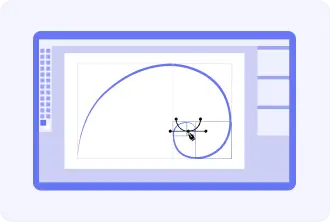Graphic Definition of Content

To present the information contained in a document more clearly, various types of data display are used. This method of presenting information is called graphic content and is most often used on websites, in presentations and other information products. When talking about this term, we mean any pictures, gr aphs, illustrations, diagrams, photographs, video clips, infographics, as well as elements such as icons or logos.
Despite the ease of understanding, design elements occupy key positions in the perception of information, since their role is not limited to just decorating the text, but expands to structuring, explaining and complementing the meaning. In addition, if you engage the best bespoke software development company, visuals will often be used to attract the attention of the audience by simply presenting things or presenting information in an image-based format.
Who creates graphic content?
In fact, such activity has long occupied an entire direction in the field of design, media and digital technologies, which speaks to its popularity and demand. Such widespread use of visual materials requires specialists in its creation, especially since there are already quite a lot of types of such content today, which means that each niche will need its skills. Here are some groups of authors working on pictorial data rendering:
- Professional designers and illustrators. Their responsibilities include creating unique images, logos, diagrams, and data-driven content.
- Photographers and videographers. As the name suggests, the area of interest of these craftsmen is photo content and video clips or videos.
- Web designers and UI/UX specialists. This cohort of craftsmen develops imagery for websites, mobile applications and interfaces.
- Software developers. They are responsible for creating visual components of the interface.
- Bloggers and marketers. They are not directly related to optical components, but still sometimes work with templates or simple editors for social networks and presentations.
Thanks to the rapid development of technology, today, in addition to professionals, people who are far from creative professions can create media assets. For example, using Figma, Canva or Photoshop gives the opportunity to work with visuals to anyone who has a need for it.
Examples and types of graphic content
To better understand what types of illustrations exist, different kinds of content are developed for various application environments. This is due to the fact that the functionality of websites and advertising banners, for example, is entirely different. And their purpose and goals are also very different. That is why specialists always take this into account when choosing one or another type of illustrative content.
Here are some typical examples of visual elements:
- Charts and graphs. They are able to present numerical information in a convenient form due to their compactness and clarity. They also include line graphs, pie charts, histograms.
- Product photos. They are crucial for sales on Internet sites, in online stores, on marketplaces or for product catalogs. The success of sales and customer activity sometimes directly depend on their quality.
- Infographics. Combining text and images allows you to briefly and clearly explain processes that are difficult to understand. They are used quite widely, both in documents and for presentations.
- Diagrams and maps. These modules are used to represent technical data in documentation, training materials or applications. They have common reading principles and are understandable to most people, but at the same time they clearly and quickly provide access to specific data.
- Icons and symbols. These visual markers have already become an integral part of our lives, but at the same time, their role is significant. If you decide to hire a dedicated React Native developer, they will definitely tell you that the convenience and functionality of these elements determines the speed and convenience of work on sites and applications.
- Video content and animation. Most often, they carry an entertaining or educational mission, while filling social networks and presentations, websites and other digital products with the possibility of interaction and active involvement.
It is worth noting that such types of display elements as comics, memes, stories also play an essential role today and their creation has long moved from the category of entertainment to a tool for influencing and attracting attention. And interactive images, comics and animated stories show themselves well in the learning environment.
The role of graphic content
As we have already said, screen content not only influences aesthetic perception, but can also directly affect other vital aspects. Let’s take communication, for example. Here, images are able to attract attention actively, since people react to pictures faster than to text, and visuals generally cope with the simplification of complex data “excellently,” which explains the popularity of infographics and diagrams.
A well-chosen visual identity can bring brands to the top market leaders, and it goes without saying how much more productive sites with convenient and intuitive navigation and structuring will be.
But you should not perceive visual assets exclusively as an auxiliary element, because they can well be an independent information carrier. However, we are not talking about icons and other elementary objects. For example, information design can sometimes contain more information than captions, and in educational slides, a visual metaphor can explain the topic in a flash instead of dry paragraphs of text.
Thus, graphic content is not just a “picture,” but a fundamental tool for influencing, conveying meanings and enhancing communication, which is an absolute must-have in the modern world and digital environment.
The role and activity of using visual blocks is constantly increasing, and this can be seen even in the growing demand for specialists who create high-quality graphics. If you deeply understand the types of digital visuals, its nature and purpose, you can successfully create functional and targeted objects that work at full capacity.